How Bout Some O's, L's, O/A's, & FAC's
Sun Jan 23, 2011 7:45 pm
Here are a few you don't see a lot of---------------------- 
 USFG PHOTO
USFG PHOTO
WW1, American major in the basket of an observation balloon flying over territory near front lines.
(How did they get that photo?)
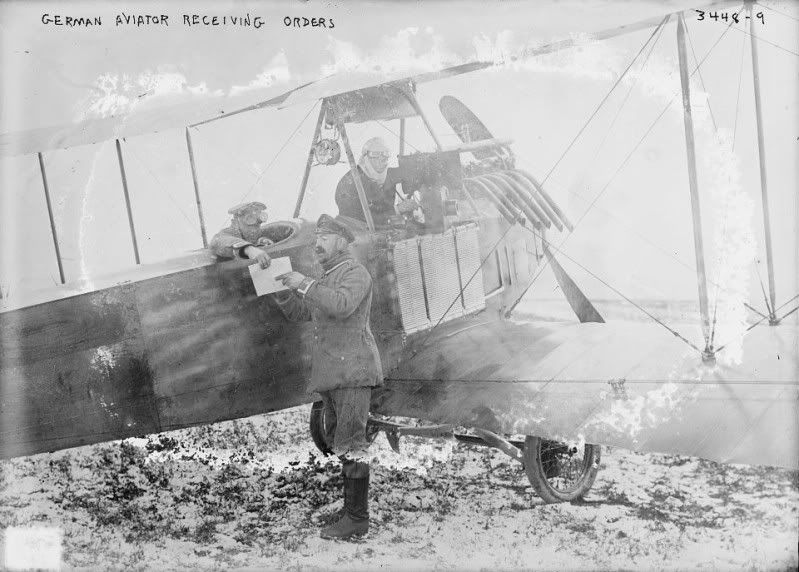 FROM A USFG COLLECTION
FROM A USFG COLLECTION
A German reconnaissance plane before take-off, probably before 1916.
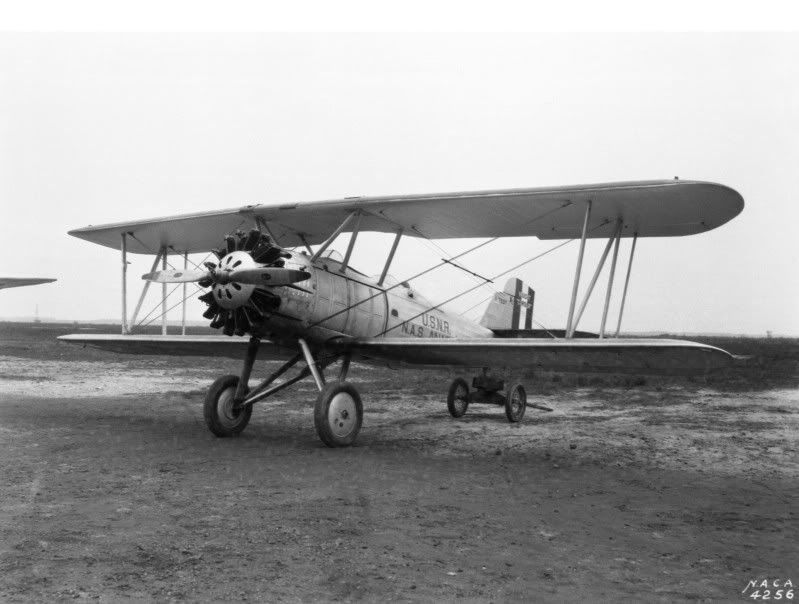 USFG PHOTO
USFG PHOTO
A U.S. Navy Vought O2U-1 Corsair (BuNo A9737) at the National Advisory Committee for Aeronautics, Langley, Virginia (USA), 26 April 1930: The Vought O2U-1 was the first Vought airplane to carry the name Corsair. The O2U was built as an observation aircraft for the Navy, and the example flown by the NACA for evaluation and cowling tests was one of the last O2U-1s built. This Corsair came from the Naval Reserve squadron at Naval Air Station Anacostia, Washington
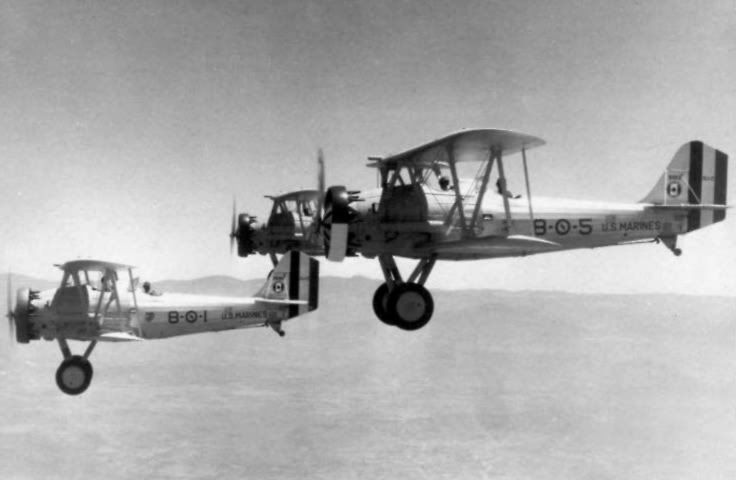 USFG PHOTO
USFG PHOTO
Three U.S. Marine Corps Vought SU-2 Corsair aircraft from Marine observation squadron VO-8M in flight, circa 1934.
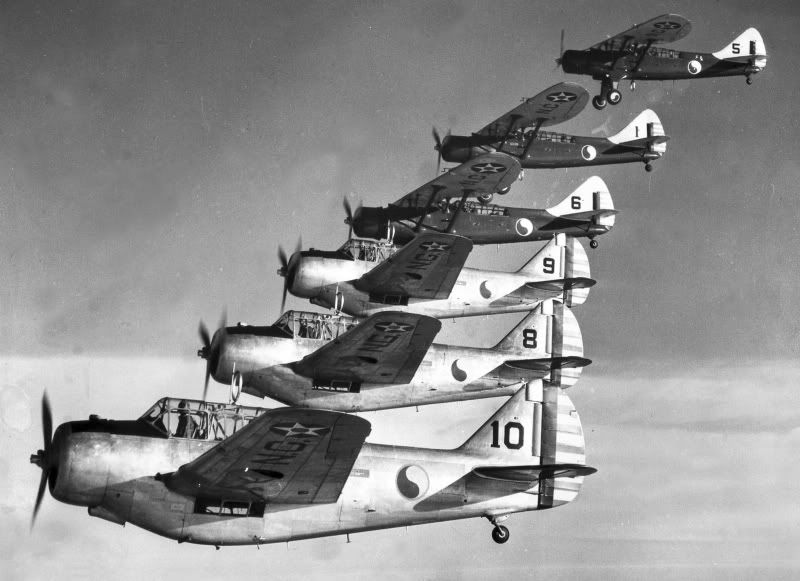 USFG PHOTO
USFG PHOTO
Three Douglas O-46A and three North American O-47 aircraft assigned to the Maryland National Guard's 104th Observation Squadron conduct a training sortie on 1 March 1940. Less than a year later, the 104th was mobilized in anticipation of World War II.
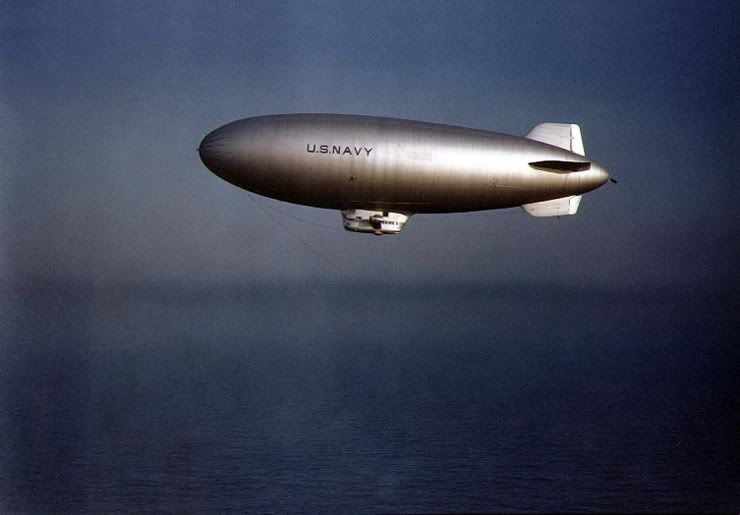 USFG PHOTO
USFG PHOTO
A U.S. Navy K-type blimp in flight, during World War II.
 USFG PHOTO
USFG PHOTO
"Sunset over the Atlantic finds another United Nations convoy moving peacefully towards it destiniation. A U.S. Navy blimp, hovering watchfully overhead, is on the lookout for any sign of enemy submarines, June 1943."
 USFG PHOTO
USFG PHOTO
Piper L-4 starting from a road, location unknown.
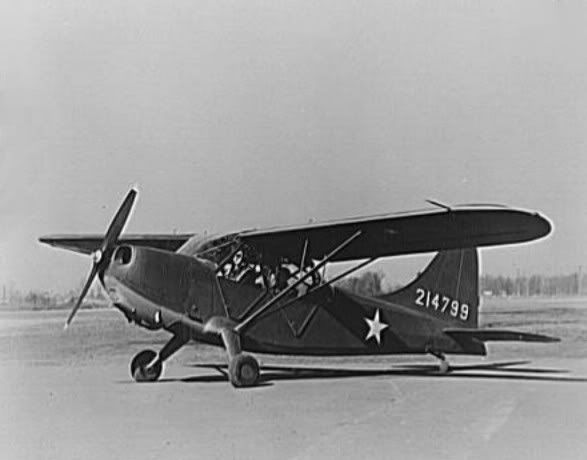 USFG PHOTO
USFG PHOTO
A USAAF Stinson L-5 Sentinel (s/n 42-14799) in April 1943.
"The "flying jeep," known also as the "eye upstairs" of the Army ground forces. Technically named the Sentinel (L-3), it is capable of hovering at speeds under forty-five miles per hour while directing ground movements and operations."
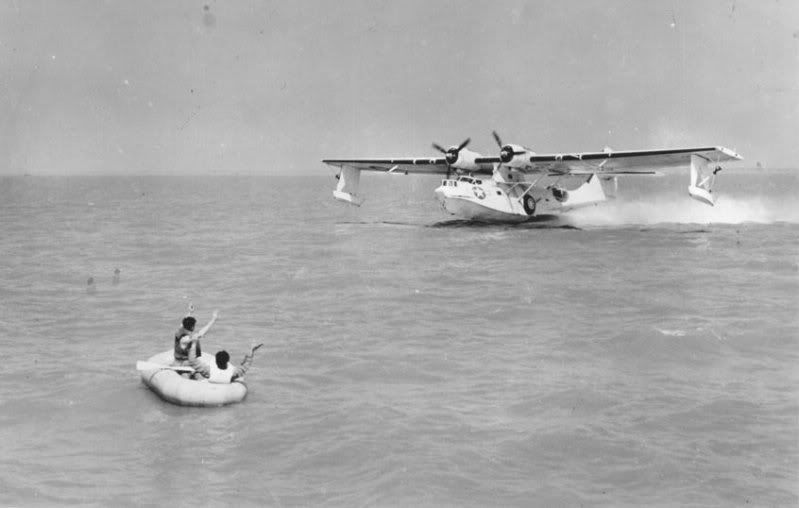 USFG PHOTO
USFG PHOTO
A USAAF Consolidated OA-10A Catalina (USAAF designation of the PBY) landing off Keesler Field , Mississippi (today Keesler Air Force Base), during a training exercise with U.S. Marine Corps rescue boat crews in 1944.
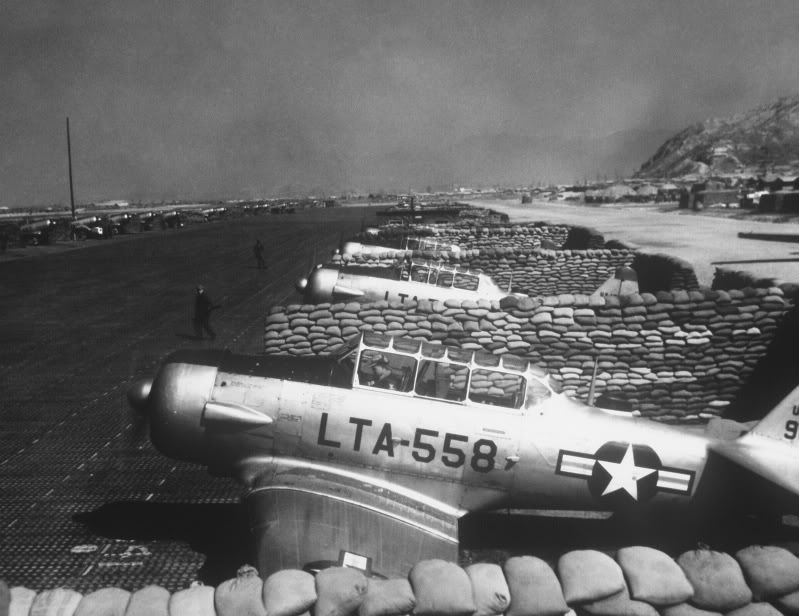 USFG PHOTO
USFG PHOTO
U.S. Air Force North American T-6s are parked in a revetment area at an advanced airstrip in Korea, on 9 March 1953. The Texans were used in Korea by forward air controllers. (Sorry This Is All I Have From Korea)
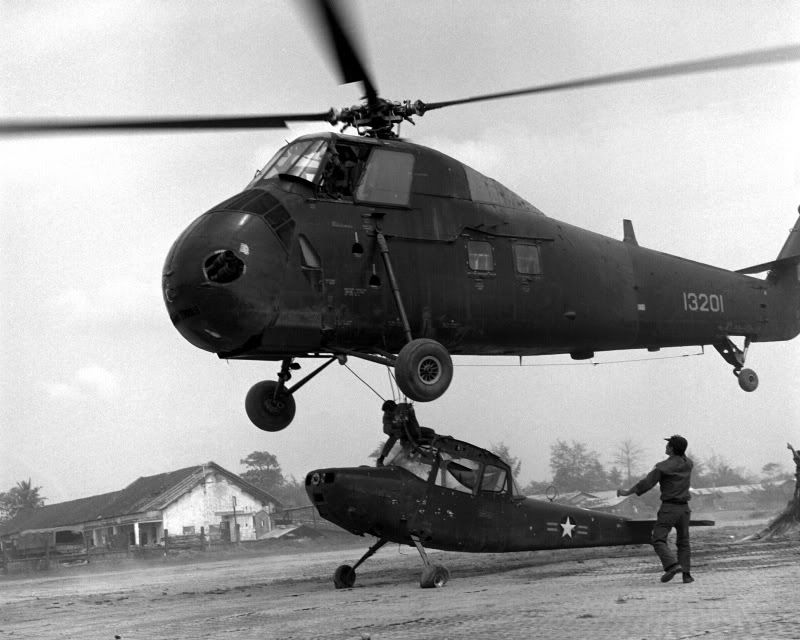 USFG PHOTO
USFG PHOTO
A South Vietnamese Air Force Sikorsky CH-34C Choctaw (US Army s/n 63-13201) lifting a VNAF Cessna O-1 Bird Dog in 1968.
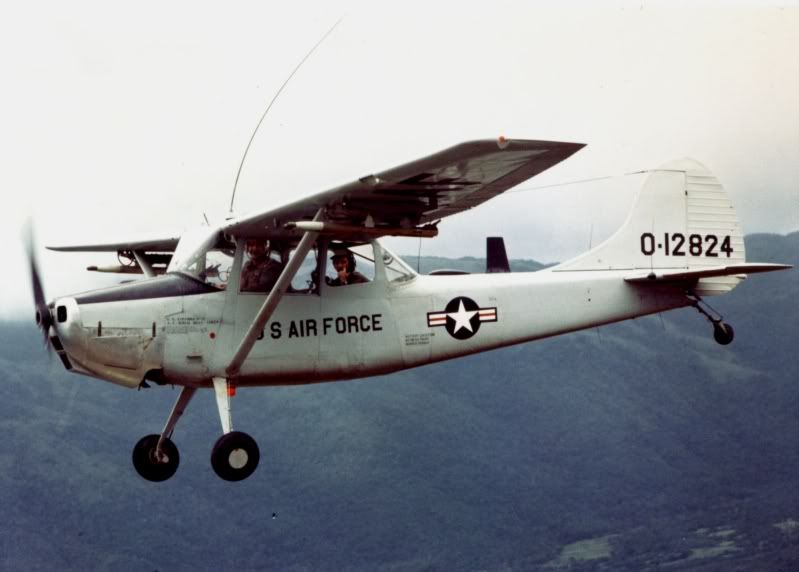 USFG PHOTO
USFG PHOTO
A U.S. Air Force Cessna O-1A Bird Dog (s/n 51-12824) in flight over Vietnam. Date Unkown
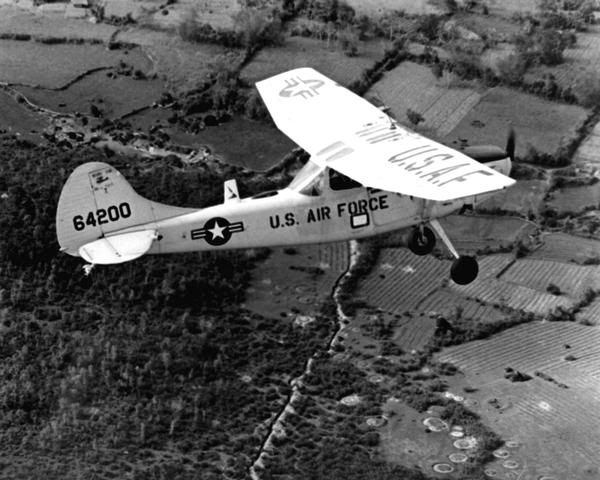 USFG PHOTO
USFG PHOTO
A U.S. Air Force Cessna 0-1E Bird Dog aircraft (s/n 56-4200) in flight over Vietnam in 1967. The aircraft was used as a forward air control aircraft throughout South Vietnam. The forward air controller (FAC) spotted suspected enemy strongholds and fired smoke rockets to mark the target for strike aircraft. Following a strike the FAC assessed bomb damage.
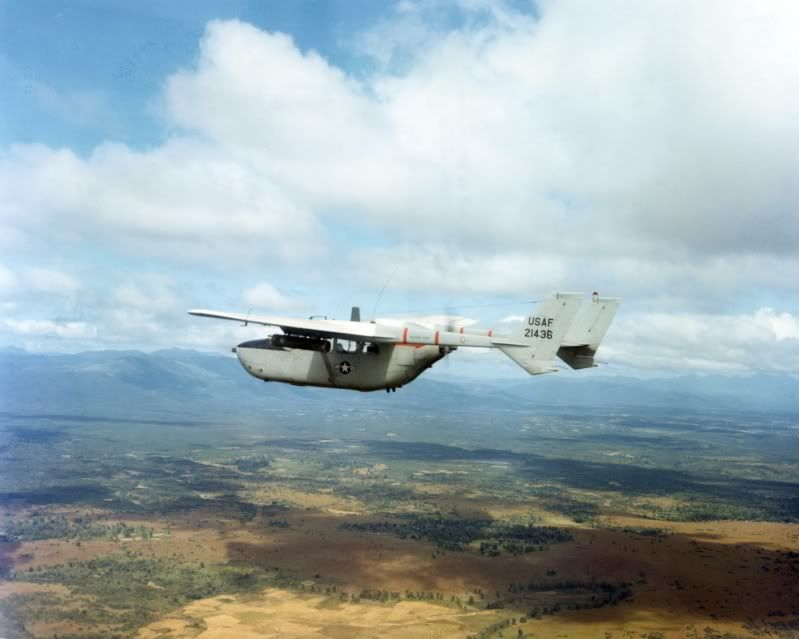 USFG PHOTO
USFG PHOTO
A U.S. Air Force Cessna O-2A-CE Super Skymaster (s/n 67-21436) in flight near Pleiku, Vietnam, in 1968.
 USFG PHOTO
USFG PHOTO
A U.S. Air Force Cessna O-2A Super Skymaster fires a white phosphorus rocket (just to the right of the gunsight’s crosshairs) to mark a target for strike aircraft near Phan Rang, Vietnam, in 1969.
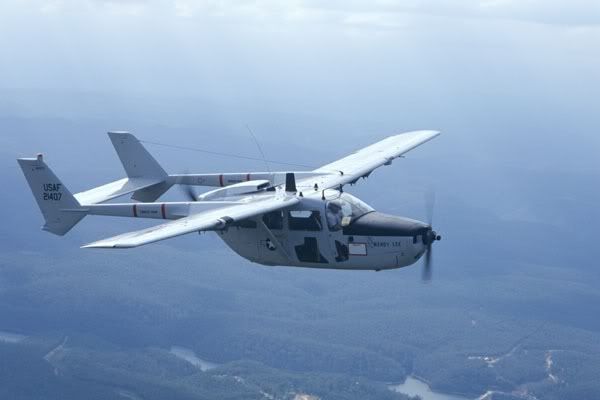 USFG
USFG
A U.S. Air Force Cessna O-2A-CE Super Skymaster (s/n 67-21407) in flight. This aircraft was manufactured in 1967 and flown to Vietnam in August of the same year. It was based at Pleiku and served in until April 1971. It was finally retired from the USAF to MASDC as HV0128 in January 1980. After being stored for 14 years, the aircraft was restored and flew as a civil registered aircraft in the USA since 1994. In 2000, it was bought by an Australian and donated to the Temora Aviation Museum in Temora, New South Wales (Australia), in December 2000.
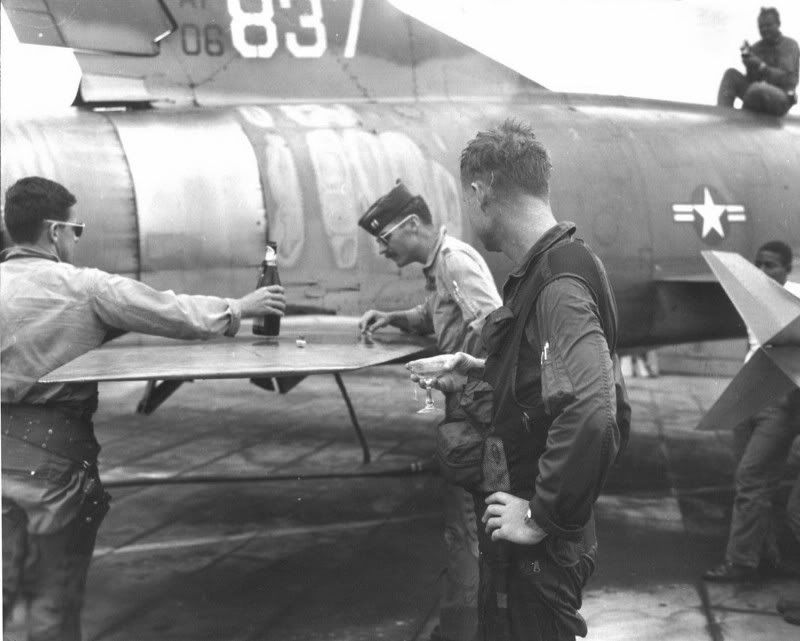 USFG PHOTO
USFG PHOTO
(I was one of the engine builders for Dick Rutan, when I worked at TCM for the VOYAGER Project, so this pic is kinda special to me)
U.S. Air Force Capt. James “Ed” Risinger finished his "Misty FAC" tour in the North American F-100F Super Sabre that is on display at the National Museum of the U.S. Air Force (s/n 56-3837) on 18 March 1968. Capt. Risinger, holding a glass of champagne, celebrates his 58th and final mission. On the left is Capt. Brian Williams and inspecting bullet damage is Capt. Richard Rutan. The "Misty" Forward Air Controllers used F-100Fs since 1967. First, they were stationed first at Phu Cat Air Base, then in 1969, they moved to Tuy Hoa Air Base.
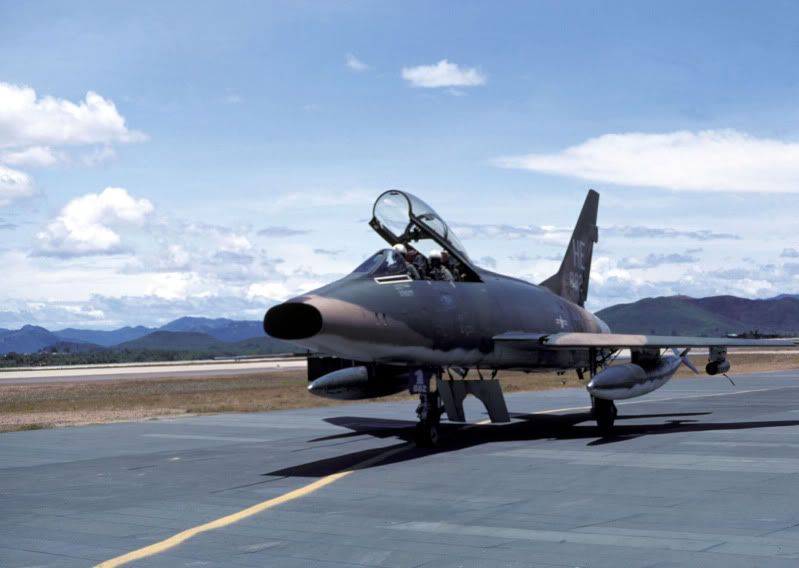 USFG PHOTO
USFG PHOTO
A U.S. Air Force North American F-100F-10-NA Super Sabre aircraft (s/n 56-3882) of the 416th Tactical Fighter Squadron, 37th Tactical Fighter Wing at Phu Cat air base, South Vietnam. The 416th TFS operated from Phu Cat with F-100s from 15 April 1967 to 27 May 1969. The F-100Fs were used in the forward air controller role. The F-100F 56-3882 was retired to the MASDC on 7 September 1979 as FE0591.
 USFG PHOTO
USFG PHOTO
U.S. Navy Rockwell OV-10A Bronco of light attack squadron VAL-4 Black Ponies in Vietnam. VAL-4 (tail code "UM") was established in 1969 and retired in 1972.
 USFG PHOTO
USFG PHOTO
Group photograph of U.S. Air Force Fast Forward Air Controllers ("Wolf FACs") of the 8th Tactical Fighter Wing at Ubon Royal Thai AB in June 1968. Drawn from the four squadrons assigned to the wing, these pilots volunteered for the Fast FAC missions. The McDonnell F-4D Phantom II is from the 497th Tactical Fighter Squadron, and the squadron’s "Night Owl" symbol is just behind the air inlet.
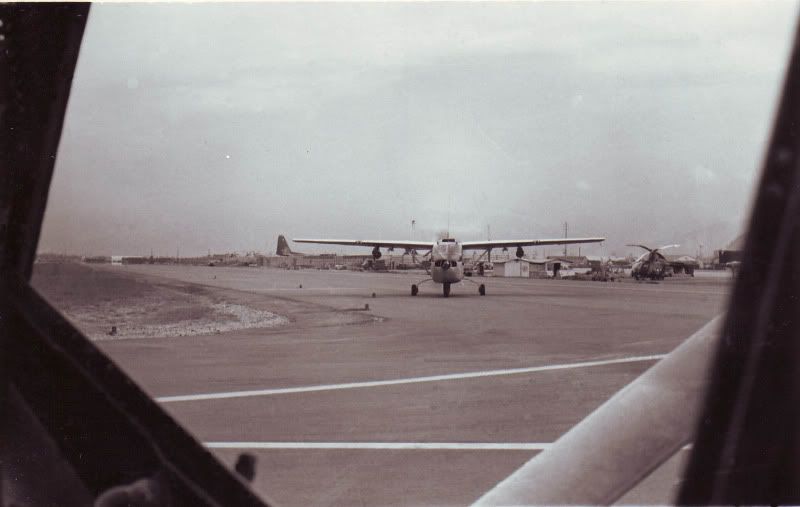 USFG PHOTO
USFG PHOTO
O-2A of the 20th Tactical Air Support Squadron taxiing for takeoff, Danang Air Base, February 1968.
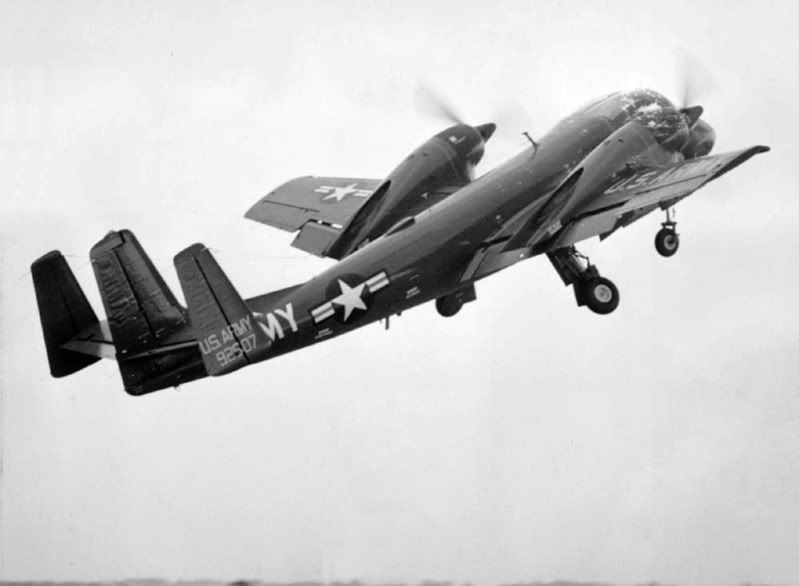 USFG PHOTO
USFG PHOTO
A U.S. Army Grumman OV-1A Mohawk (s/n 59-2607) taking off. This aircraft crashed on 16 June 1965.
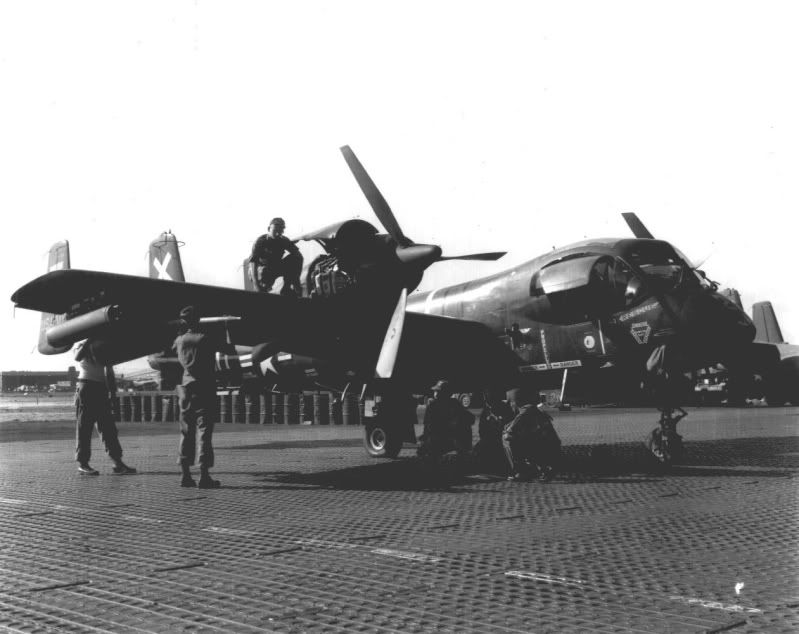 USFG PHOTO
USFG PHOTO
1LT Ralph G. Rosenberg and crew of OV-1 Mohawk aircraft on airstrip somewhere in Vietnam.
 USFG PHOTO
USFG PHOTO
An OA-37B Dragonfly prepares for a low-level strafing mission at dawn. The modified version of the T-37 flight trainer aircraft has been adapted for use by forward air controllers and as an observation and attack aircraft.
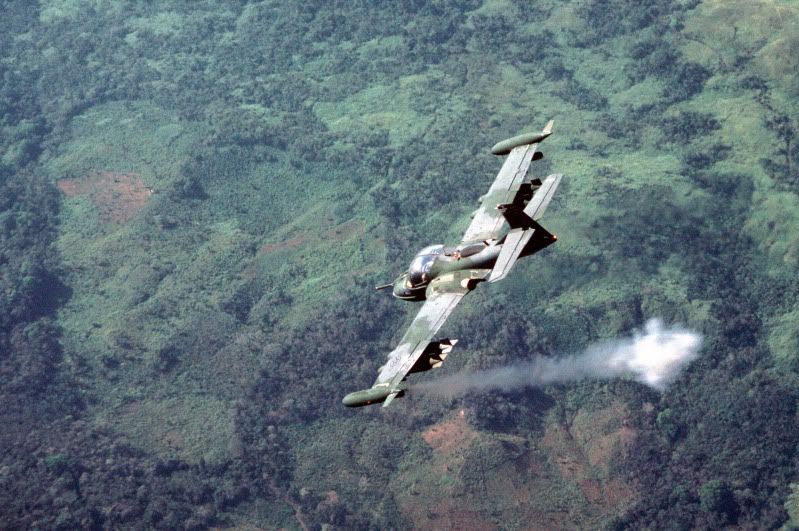 USFG PHOTO
USFG PHOTO
A U.S. Air Force Cessna OA-37B Dragonfly aircraft of the 24th Tactical Air Support Squadron fires a white phosphorous marking rocket during a training flight. The 24th TASS, based at Howard Air Force Base, Panama, was the USAF's only active-duty OA-37B forward air control unit in 1990.
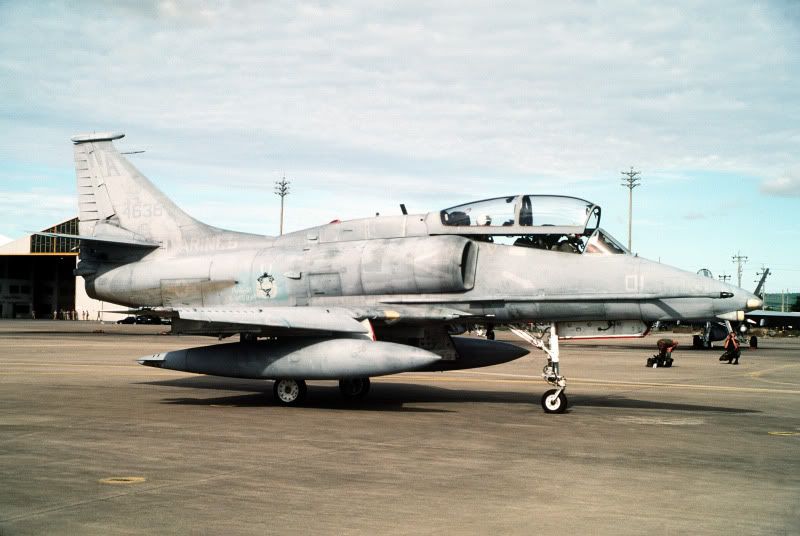 USFG PHOTO
USFG PHOTO
U.S. Marine Corps McDonnell Douglas OA-4M Skyhawk (BuNo 154638) from Marine Aircraft Group 12 (MAG-12) taxis on the flight line during the combined Thai/U.S. joint exercise “Thalay Thai '89”, 1 September 1989. This aircraft was later put on static display at the main gate of Marine Corps Air Station Iwakuni, Japan.
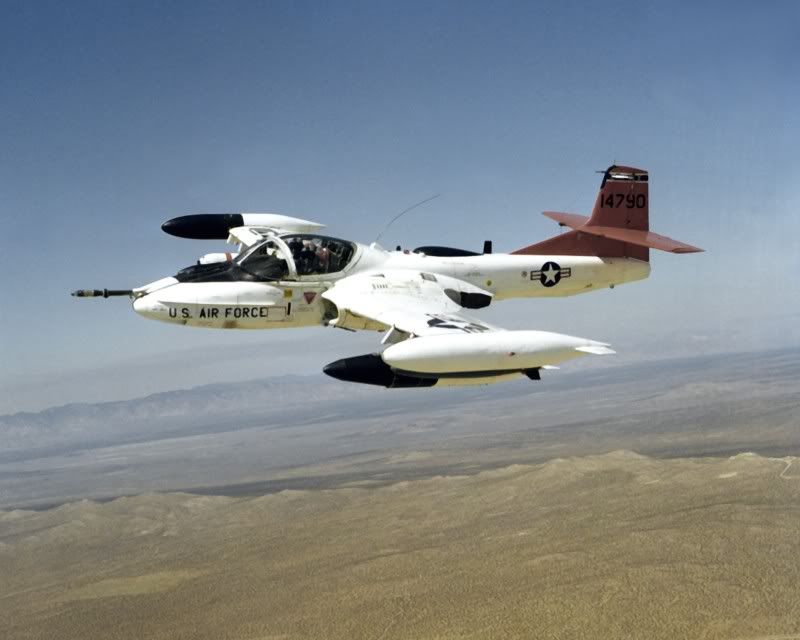 USFG PHOTO
USFG PHOTO
An air-to-air left side view of an OA-37 Dragonfly aircraft with a Mark 20 bomb mounted under the right wing and a Mark 82 500-lb. general-purpose bomb under the left.
 USFG PHOTO
USFG PHOTO
An air-to-air right side view of an OV-10 Bronco aircraft firing a White phosphorus smoke rocket to mark a ground target. The aircraft is used by forward air controllers in support of ground troops.
 USFG PHOTO
USFG PHOTO
U.S. Air Force forward air control instructor Maj. Scott Shinn explains the Cessna O-2A-CE Super Skymaster (s/n 68-10872) aircraft's rocket pod firing sequence to three other Missouri Air National Guard pilots of the 110th Tactical Fighter Squadron at Patrick Air Force Base, Florida (USA), on 1 August 1980.
 USFG PHOTO
USFG PHOTO
A U.S. Air Force Cessna OA-37B Dragonfly aircraft of the 24th Composite Wing from Howard Air Force Base, Canal Zone, is parked on the flight line of a Guatemalan air base on 29 July 1987. Members of the wing were deployed to Guatemala for training.
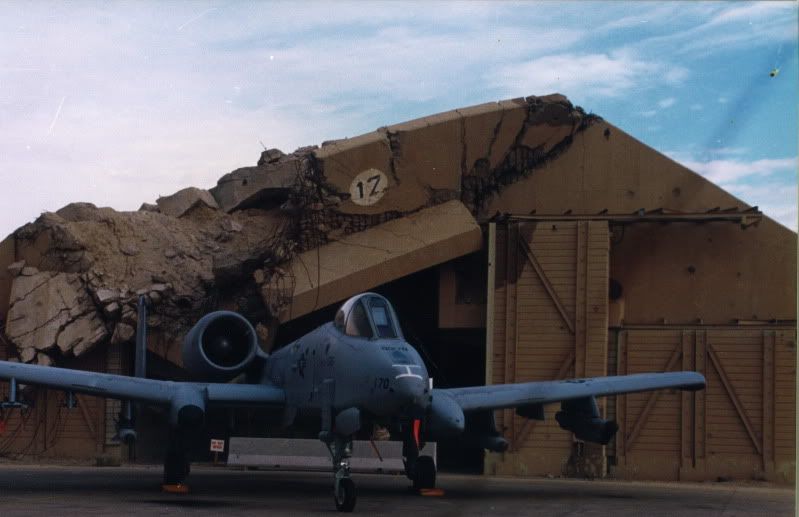 USFG PHOTO
USFG PHOTO
OA-10A 80-0170 70th Fighter Squadron, 347th Wing. Ahmed Al-Jaber AB Kuwait circa 1997 participating in Operation Southern Watch.
And Just One More That I Thought Was Cool!
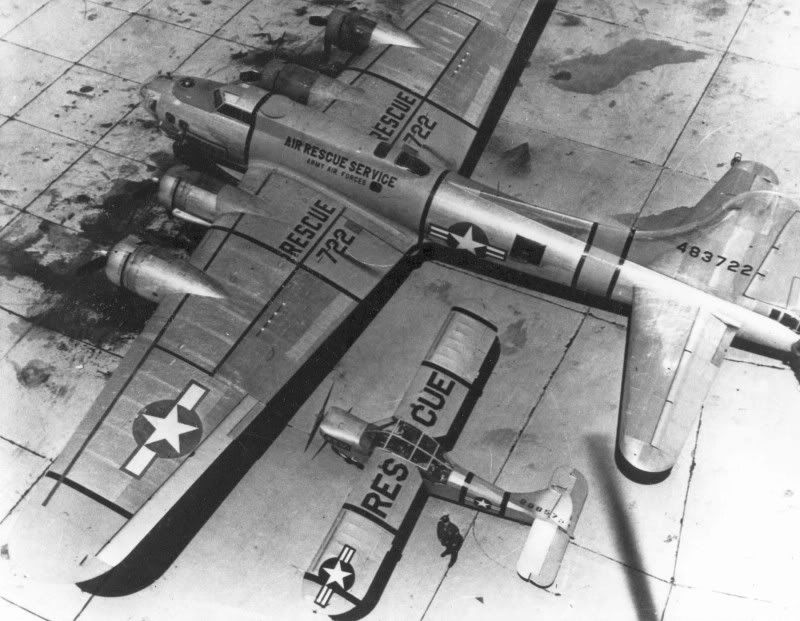 USFG PHOTO
USFG PHOTO
Top view of Boeing SB-17G-95DL (S/N 44-83722), assigned to the 2nd ERS as a Search and Rescue aircraft, with Stinson L-5 (S/N 42-98578).
-------------------------------------------------------------------------------------------------------------------

 USFG PHOTO
USFG PHOTOWW1, American major in the basket of an observation balloon flying over territory near front lines.
(How did they get that photo?)
 FROM A USFG COLLECTION
FROM A USFG COLLECTIONA German reconnaissance plane before take-off, probably before 1916.
 USFG PHOTO
USFG PHOTOA U.S. Navy Vought O2U-1 Corsair (BuNo A9737) at the National Advisory Committee for Aeronautics, Langley, Virginia (USA), 26 April 1930: The Vought O2U-1 was the first Vought airplane to carry the name Corsair. The O2U was built as an observation aircraft for the Navy, and the example flown by the NACA for evaluation and cowling tests was one of the last O2U-1s built. This Corsair came from the Naval Reserve squadron at Naval Air Station Anacostia, Washington
 USFG PHOTO
USFG PHOTOThree U.S. Marine Corps Vought SU-2 Corsair aircraft from Marine observation squadron VO-8M in flight, circa 1934.
 USFG PHOTO
USFG PHOTOThree Douglas O-46A and three North American O-47 aircraft assigned to the Maryland National Guard's 104th Observation Squadron conduct a training sortie on 1 March 1940. Less than a year later, the 104th was mobilized in anticipation of World War II.
 USFG PHOTO
USFG PHOTOA U.S. Navy K-type blimp in flight, during World War II.
 USFG PHOTO
USFG PHOTO"Sunset over the Atlantic finds another United Nations convoy moving peacefully towards it destiniation. A U.S. Navy blimp, hovering watchfully overhead, is on the lookout for any sign of enemy submarines, June 1943."
 USFG PHOTO
USFG PHOTOPiper L-4 starting from a road, location unknown.
 USFG PHOTO
USFG PHOTOA USAAF Stinson L-5 Sentinel (s/n 42-14799) in April 1943.
"The "flying jeep," known also as the "eye upstairs" of the Army ground forces. Technically named the Sentinel (L-3), it is capable of hovering at speeds under forty-five miles per hour while directing ground movements and operations."
 USFG PHOTO
USFG PHOTOA USAAF Consolidated OA-10A Catalina (USAAF designation of the PBY) landing off Keesler Field , Mississippi (today Keesler Air Force Base), during a training exercise with U.S. Marine Corps rescue boat crews in 1944.
 USFG PHOTO
USFG PHOTOU.S. Air Force North American T-6s are parked in a revetment area at an advanced airstrip in Korea, on 9 March 1953. The Texans were used in Korea by forward air controllers. (Sorry This Is All I Have From Korea)
 USFG PHOTO
USFG PHOTOA South Vietnamese Air Force Sikorsky CH-34C Choctaw (US Army s/n 63-13201) lifting a VNAF Cessna O-1 Bird Dog in 1968.
 USFG PHOTO
USFG PHOTOA U.S. Air Force Cessna O-1A Bird Dog (s/n 51-12824) in flight over Vietnam. Date Unkown
 USFG PHOTO
USFG PHOTOA U.S. Air Force Cessna 0-1E Bird Dog aircraft (s/n 56-4200) in flight over Vietnam in 1967. The aircraft was used as a forward air control aircraft throughout South Vietnam. The forward air controller (FAC) spotted suspected enemy strongholds and fired smoke rockets to mark the target for strike aircraft. Following a strike the FAC assessed bomb damage.
 USFG PHOTO
USFG PHOTOA U.S. Air Force Cessna O-2A-CE Super Skymaster (s/n 67-21436) in flight near Pleiku, Vietnam, in 1968.
 USFG PHOTO
USFG PHOTOA U.S. Air Force Cessna O-2A Super Skymaster fires a white phosphorus rocket (just to the right of the gunsight’s crosshairs) to mark a target for strike aircraft near Phan Rang, Vietnam, in 1969.
 USFG
USFGA U.S. Air Force Cessna O-2A-CE Super Skymaster (s/n 67-21407) in flight. This aircraft was manufactured in 1967 and flown to Vietnam in August of the same year. It was based at Pleiku and served in until April 1971. It was finally retired from the USAF to MASDC as HV0128 in January 1980. After being stored for 14 years, the aircraft was restored and flew as a civil registered aircraft in the USA since 1994. In 2000, it was bought by an Australian and donated to the Temora Aviation Museum in Temora, New South Wales (Australia), in December 2000.
 USFG PHOTO
USFG PHOTO (I was one of the engine builders for Dick Rutan, when I worked at TCM for the VOYAGER Project, so this pic is kinda special to me)
U.S. Air Force Capt. James “Ed” Risinger finished his "Misty FAC" tour in the North American F-100F Super Sabre that is on display at the National Museum of the U.S. Air Force (s/n 56-3837) on 18 March 1968. Capt. Risinger, holding a glass of champagne, celebrates his 58th and final mission. On the left is Capt. Brian Williams and inspecting bullet damage is Capt. Richard Rutan. The "Misty" Forward Air Controllers used F-100Fs since 1967. First, they were stationed first at Phu Cat Air Base, then in 1969, they moved to Tuy Hoa Air Base.
 USFG PHOTO
USFG PHOTOA U.S. Air Force North American F-100F-10-NA Super Sabre aircraft (s/n 56-3882) of the 416th Tactical Fighter Squadron, 37th Tactical Fighter Wing at Phu Cat air base, South Vietnam. The 416th TFS operated from Phu Cat with F-100s from 15 April 1967 to 27 May 1969. The F-100Fs were used in the forward air controller role. The F-100F 56-3882 was retired to the MASDC on 7 September 1979 as FE0591.
 USFG PHOTO
USFG PHOTOU.S. Navy Rockwell OV-10A Bronco of light attack squadron VAL-4 Black Ponies in Vietnam. VAL-4 (tail code "UM") was established in 1969 and retired in 1972.
 USFG PHOTO
USFG PHOTOGroup photograph of U.S. Air Force Fast Forward Air Controllers ("Wolf FACs") of the 8th Tactical Fighter Wing at Ubon Royal Thai AB in June 1968. Drawn from the four squadrons assigned to the wing, these pilots volunteered for the Fast FAC missions. The McDonnell F-4D Phantom II is from the 497th Tactical Fighter Squadron, and the squadron’s "Night Owl" symbol is just behind the air inlet.
 USFG PHOTO
USFG PHOTOO-2A of the 20th Tactical Air Support Squadron taxiing for takeoff, Danang Air Base, February 1968.
 USFG PHOTO
USFG PHOTOA U.S. Army Grumman OV-1A Mohawk (s/n 59-2607) taking off. This aircraft crashed on 16 June 1965.
 USFG PHOTO
USFG PHOTO1LT Ralph G. Rosenberg and crew of OV-1 Mohawk aircraft on airstrip somewhere in Vietnam.
 USFG PHOTO
USFG PHOTOAn OA-37B Dragonfly prepares for a low-level strafing mission at dawn. The modified version of the T-37 flight trainer aircraft has been adapted for use by forward air controllers and as an observation and attack aircraft.
 USFG PHOTO
USFG PHOTOA U.S. Air Force Cessna OA-37B Dragonfly aircraft of the 24th Tactical Air Support Squadron fires a white phosphorous marking rocket during a training flight. The 24th TASS, based at Howard Air Force Base, Panama, was the USAF's only active-duty OA-37B forward air control unit in 1990.
 USFG PHOTO
USFG PHOTOU.S. Marine Corps McDonnell Douglas OA-4M Skyhawk (BuNo 154638) from Marine Aircraft Group 12 (MAG-12) taxis on the flight line during the combined Thai/U.S. joint exercise “Thalay Thai '89”, 1 September 1989. This aircraft was later put on static display at the main gate of Marine Corps Air Station Iwakuni, Japan.
 USFG PHOTO
USFG PHOTOAn air-to-air left side view of an OA-37 Dragonfly aircraft with a Mark 20 bomb mounted under the right wing and a Mark 82 500-lb. general-purpose bomb under the left.
 USFG PHOTO
USFG PHOTOAn air-to-air right side view of an OV-10 Bronco aircraft firing a White phosphorus smoke rocket to mark a ground target. The aircraft is used by forward air controllers in support of ground troops.
 USFG PHOTO
USFG PHOTOU.S. Air Force forward air control instructor Maj. Scott Shinn explains the Cessna O-2A-CE Super Skymaster (s/n 68-10872) aircraft's rocket pod firing sequence to three other Missouri Air National Guard pilots of the 110th Tactical Fighter Squadron at Patrick Air Force Base, Florida (USA), on 1 August 1980.
 USFG PHOTO
USFG PHOTOA U.S. Air Force Cessna OA-37B Dragonfly aircraft of the 24th Composite Wing from Howard Air Force Base, Canal Zone, is parked on the flight line of a Guatemalan air base on 29 July 1987. Members of the wing were deployed to Guatemala for training.
 USFG PHOTO
USFG PHOTOOA-10A 80-0170 70th Fighter Squadron, 347th Wing. Ahmed Al-Jaber AB Kuwait circa 1997 participating in Operation Southern Watch.
And Just One More That I Thought Was Cool!
 USFG PHOTO
USFG PHOTOTop view of Boeing SB-17G-95DL (S/N 44-83722), assigned to the 2nd ERS as a Search and Rescue aircraft, with Stinson L-5 (S/N 42-98578).
-------------------------------------------------------------------------------------------------------------------
Re: How Bout Some O's, L's, O/A's, & FAC's
Sun Jan 23, 2011 8:50 pm
The top three aircraft in the echelon (pictue 5) are Douglas O-46's, if they had in line engines they'd be O-43's. I love the tuned headers on the AVIATIK (?) in picture 3, being that long they must have added to the engines bottom end grunt-
The B-17 has had a checkered life. Built as a B-17G-95-DL in Long Beach, it was converted to a B-17H (?) then an SB. later it was deliberately exposed to three nuclear blasts @ Yuca Flats, NV. the remains were sold to Kermit Weeks in 1985 and are currently in storage.
The B-17 has had a checkered life. Built as a B-17G-95-DL in Long Beach, it was converted to a B-17H (?) then an SB. later it was deliberately exposed to three nuclear blasts @ Yuca Flats, NV. the remains were sold to Kermit Weeks in 1985 and are currently in storage.
Re: How Bout Some O's, L's, O/A's, & FAC's
Sun Jan 23, 2011 9:02 pm
Hi,
Cool pictrures. I think the L-4 photo, might be in Korea as well, due to the star and bar on the fuse. Also, the Sentinal is an L-5.
Cool pictrures. I think the L-4 photo, might be in Korea as well, due to the star and bar on the fuse. Also, the Sentinal is an L-5.
Re: How Bout Some O's, L's, O/A's, & FAC's
Sun Jan 23, 2011 9:41 pm
The B-17 has had a checkered life. Built as a B-17G-95-DL in Long Beach, it was converted to a B-17H (?) then an SB. later it was deliberately exposed to three nuclear blasts @ Yuca Flats, NV. the remains were sold to Kermit Weeks in 1985 and are currently in storage.[/quote]
I wonder if it glows in the dark?
I wonder if it glows in the dark?
Re: How Bout Some O's, L's, O/A's, & FAC's
Sun Jan 23, 2011 10:00 pm
"How come there's always a light on in that hanger?"
Re: How Bout Some O's, L's, O/A's, & FAC's
Sun Jan 23, 2011 10:35 pm
wow!! talk about some fresh material for a change!! excellent pics!! 


Re: How Bout Some O's, L's, O/A's, & FAC's
Mon Jan 24, 2011 11:17 am
Great photos, thought I would share this one with you of a memorable flight.
Trip to Sun and Fun from Atlanta around 1990 with Raven Craig Morrison flying in formation. The O-1 he was flying belonged to Dudley Fort at the time. It was one of those trips you will always remember.
Craig could really fly formation and tucked in tight on my O-1 several times during the trip for photos.
Image deleted
Craig was killed later in the crash of a T-6,
Steve
Trip to Sun and Fun from Atlanta around 1990 with Raven Craig Morrison flying in formation. The O-1 he was flying belonged to Dudley Fort at the time. It was one of those trips you will always remember.
Craig could really fly formation and tucked in tight on my O-1 several times during the trip for photos.
Image deleted
Craig was killed later in the crash of a T-6,
Steve
Last edited by L-4Pilot on Mon Jan 24, 2011 11:46 am, edited 1 time in total.
Re: How Bout Some O's, L's, O/A's, & FAC's
Mon Jan 24, 2011 11:34 am
L-4Pilot!
I just clicked on the link in your post and it started to download a worm or MAL WARE into my computer-All others! STAY AWAY FROM THE LINK AND DO NOT CLICK ON IT!!!!!!!!!!











I just clicked on the link in your post and it started to download a worm or MAL WARE into my computer-All others! STAY AWAY FROM THE LINK AND DO NOT CLICK ON IT!!!!!!!!!!
Re: How Bout Some O's, L's, O/A's, & FAC's
Mon Jan 24, 2011 11:45 am
From image shack? will delete the link and try to figure out how to post the picture another way.
Try this face book upload and let me know if it works. This is from my L-4 Community face book page.
http://www.facebook.com/photo.php?fbid= ... 2753435388
There are several O-1 photos in this album.
Steve
Try this face book upload and let me know if it works. This is from my L-4 Community face book page.
http://www.facebook.com/photo.php?fbid= ... 2753435388
There are several O-1 photos in this album.
Steve
Re: How Bout Some O's, L's, O/A's, & FAC's
Mon Jan 24, 2011 8:21 pm
Steve, welcome to WIX. Thats a nice shot you have there. We look forward to you sharing more with us. 
Robbie
Robbie
Re: How Bout Some O's, L's, O/A's, & FAC's
Mon Jan 24, 2011 10:41 pm
Thanks for sharing, Robbie!! Great pics in this group too. <says the very unprejudiced one.....LOL>
Re: How Bout Some O's, L's, O/A's, & FAC's
Fri Feb 10, 2017 8:56 am
Bump
Re: How Bout Some O's, L's, O/A's, & FAC's
Fri Feb 10, 2017 10:22 am
Thanks for the "bump". This thread goes back awhile. Maybe I will come out of retirement, & do some more photo threads soon.
Robbie
Robbie
Re: How Bout Some O's, L's, O/A's, & FAC's
Sat Feb 11, 2017 8:38 am
Beat-up slide of my uncle, Donald Brame, in a Bird Dog over Oscoda, MI in the mid-'50s:

Unfortunately, the rudder hadn't been painted yet so there are five possible serials for this one:
50-1678
51-4678
51-12678
55-4678
56-2678

Unfortunately, the rudder hadn't been painted yet so there are five possible serials for this one:
50-1678
51-4678
51-12678
55-4678
56-2678
Re: How Bout Some O's, L's, O/A's, & FAC's
Sun Feb 12, 2017 9:30 am
The B-17 and L-5 photo has been published a few times. It took me years to figure out that I mentally had the colors on the wrong order..the center sections and wing tips are yellow, with only a bit of silver on the wing. Somehow, I figured it was the opposite.
Aside from the too wide yellow fuselage stripe (it should be 3 feet, it looks like more here...and the black borders should be six inches, again they look wider than that) I'd consider painting a L-5 in that scheme.
Aside from the too wide yellow fuselage stripe (it should be 3 feet, it looks like more here...and the black borders should be six inches, again they look wider than that) I'd consider painting a L-5 in that scheme.